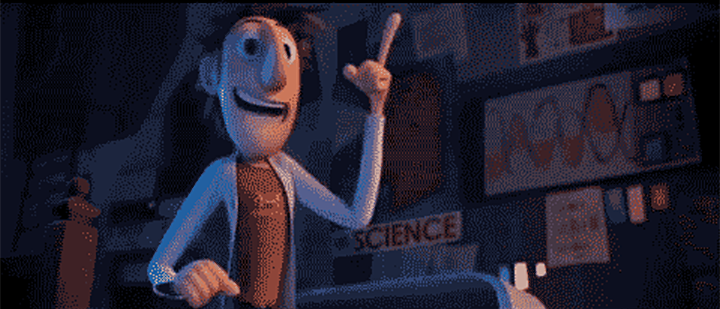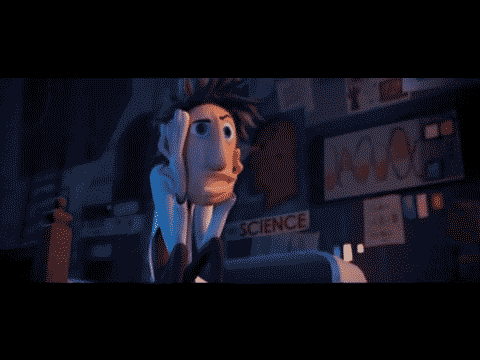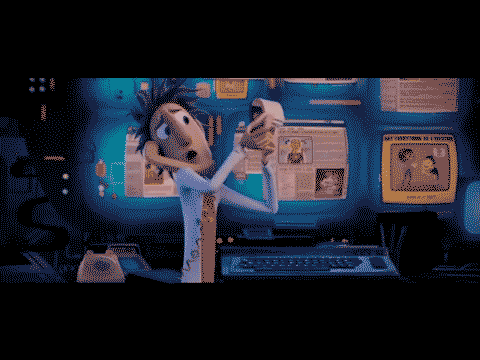A Simple Thought: Go Big. (And Stay Simple.)
by
Here’s how I was going to start this simple thought:
“The pendulum may have swung, I think. Where once student animators used to be blamed for over-acting and over-animating, I think the opposite may now be starting to happen. There is this blanket of seriousness and a focus on subtlety that seems to have taken over, at least from where I sit. Maybe it’s the prevalence of more “realistic” animation avenues in VFX and gaming, or the competitive reaction to the invasion of mo-cap. Whatever it is, there is this undercurrent of influence promoting a heavy reliance on video reference and the nuance and detail it can yield, and as a result the raw and entertaining caricature of it all is getting lost in the fog.”
But you know what, that just isn’t true.
I may be feeling it from where I sit, from the perspective of the movies I have worked on, or the classes I have taught. But dammit if there aren’t a ton of “cartoon” movies out there right now and in recent years that have been entertaining the hell out of me. Movies like “Cloudy With A Chance Of Meatballs”, “Hotel Transylvania” and those damn little Minions from “Despicable Me” have brought such huge smiles to my face. Somebody is doing it really well out there. So, maybe this is just me lamenting my own lack of experience in this pushed style. After all, Megamind ain’t no Flint Lockwood, knowhatimean? 😉 (Although, I freakin’ LOVED working on that movie.)
But even if your performance isn’t meant to be cartooned, it still should have a sense of caricature, a feeling of exaggeration. It should go big, and stay simple.
When I was first learning, my inclination, as well as most everyone else’s, was to go “wacky.” I wanted everything to be slapstick and funny – overblown reactions, excessive movement, and wild arcs that the eye can’t easily follow. What I was so happy to learn was that even the most broad and wacky action still needs purpose, needs to be rooted in the laws of physics (even if it is defying them), and needs to be simple and clear enough for your audience to “read” the point of the shot – the part of the story the shot needs to tell.
But why “big”?
I encourage to go big for two reasons:
1) It makes it easier to see the body mechanics you are trying to describe.
2) It makes it easier for your audience to clearly read your characters emotion.
But in order to allow yourself the space to be big you need to stay simple. Don’t crowd and clutter your acting beats with wild and unreadable movement, or subtle ambient movement throughout the whole thing that doesn’t specifically contribute to the story of the shot.
The organic caracature of Tangled, the snappy poses of Cloudy, and the organi-snap of Megamind all use an exaggerated sense of movement and a simple set of performance choices to achieve clear, readable and entertaining scenes.
But why “simple”?
Trying to add too many details, too much continuous or constant movement, too many small wobbles and jiggles and twitches that aren’t actually the main point of the shot, but are merely there to add more “life”, can far too often look wrong and be distracting, wonky, break the “suspension of disbelief” that you need to keep your audience engaged and in the moment. I like to decide what is the “center of interest” in my shot – the specific word(s) or movement that will express the central idea of the moment – and focus on that. Choosing that moment is crucial, and not always as easy as it first may appear.
Here’s an abstract example:
You’re given a line of dialog where your character says “I don’t know what I’m going to DO!”. And you can just hear it, can’t you? Really dramatic, maybe even fast delivery of “I don’t know what I’m going to…”, and then a great big explosive “DO!”. Maybe most of us would have the initial impulse to make the word “DO” really big and detailed, thus making it more dramatic. But I might ask, is that really the point of the shot? Is that really the main idea behind what the character is saying? The word “DO”? I don’t think so. I would want to look just a bit deeper, and hopefully see that the fact that they “don’t know what…” is the real idea behind the shot, the real emotional dilemma. “DO” is just the subject of the idea. “I don’t know what…” is the root of the emotional conflict. Therefore, I would decide to put most of my detail and effort behind what they are doing and how they are moving during that part of the phrase. That is not to say it should be the “biggest” movement, but it should at least be the part that contains the most physical and emotional “texture” – smaller, more detailed and human movements – in order for it to be the most impactful and memorable part of the shot (at least in terms of its emotional impact.) Then, I would purposely leave the word “DO” nice and simple. Graphically appealing and read-able, of course, but simple.
Flint Thinking – full shot
Flint Thinking – “center of interest”
Flint Calling – full shot
Flint Calling – “center of interest”
So, I guess the sum-up of my “simple thought” is: Go big. Stay simple. And choose to focus more of those big simple movements and poses and expressions on the “center of interest” in your shot, the part of the shot that communicates the heart of the idea intended.
And speaking of big – next podcast waiting in the wings will be a brief demo/discussion of how I push my animation from organic to cartooned.
See you there! Soon!
/ken





Great stuff Ken, love you put that many examples.
And I think you’re probably right, people in general are drifting to a more serious and subtle stuff nowadays, specially in reels ( me included I’m afraid).
Thanks for the heads up! Looking forward to that podcast 😀
wow !!!!! loved it .. thanks a lot KEN .. i am a student and i was a little stuck with my project . this article opened many doors …. fantastic timing .. thank you :))
Excellent! Glad it was helpful 🙂
Fantastic! Thanks Ken, really enjoyed reading that and it makes a lot of sense.
Thanks Bryn! Good to know my ramblings can be occasionally cohesive 😉